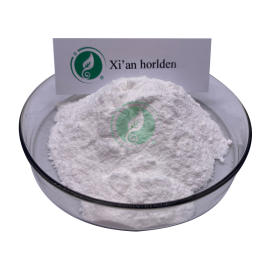-
Categories
-
Pharmaceutical Intermediates
-
Active Pharmaceutical Ingredients
-
Food Additives
- Industrial Coatings
- Agrochemicals
- Dyes and Pigments
- Surfactant
- Flavors and Fragrances
- Chemical Reagents
- Catalyst and Auxiliary
- Natural Products
- Inorganic Chemistry
-
Organic Chemistry
-
Biochemical Engineering
- Analytical Chemistry
- Cosmetic Ingredient
-
Pharmaceutical Intermediates
Promotion
ECHEMI Mall
Wholesale
Weekly Price
Exhibition
News
-
Trade Service
| The secret to making pork more delicious |
Recently, the pig genetics and breeding team of the College of Animal Science and Technology of Sichuan Agricultural University published a research paper titled "The Atlas of Gene Transcription Regulation of Different Tissues in Pigs Reveals Tissue Characteristics and Transcriptional Evolution Dynamics" in Nature-Communications
.
This research provides an in-depth analysis of the molecular mechanism of pork quality traits, and provides important basic data and theoretical support for the next step of molecular breeding.
It also lays the foundation for promoting pigs as a biological model of human biology and disease
.
Grow faster and taste better, defend local pig breeds
Grow faster and taste better, defend local pig breeds "Pork fat is divided into three types: subcutaneous fat, intermuscular fat, and intramuscular fat
.
Usually, when we say that this piece of meat is too fat, it means that the subcutaneous fat is too thick.
The research is particularly focused on the growth of skeletal muscle, an important economic trait of pigs
.
Skeletal muscle is the most important part of the animal body, accounting for about 40% of the body weight of meat-producing animals
A large number of studies in the past generally regarded multiple skeletal muscles as the same type of tissue, and there was no detailed and in-depth exploration on the genetic and transcriptional regulation characteristics of skeletal muscles in different parts
.
This study further constructed a fine transcription regulation map of 47 different parts of skeletal muscle from the head, forelimbs, trunk to hind limbs, and clarified their molecular regulation differences in energy metabolism and contraction characteristics.
Schematic diagram of 47 pig skeletal muscles Photo courtesy ofSichuan Agricultural University
Schematic diagram of 47 pig skeletal muscles Photo courtesy ofSichuan Agricultural University Photo courtesy of Sichuan Agricultural University
Using Spatial Transcriptome to Determine the Type of Porcine Single Muscle Fiber Photo courtesy of Sichuan Agricultural University
Using Spatial Transcriptome to Determine the Type of Porcine Single Muscle Fiber Photo courtesy of Sichuan Agricultural University At the same time, this research also provides a more solid theoretical foundation for the protection and utilization of local pig breed resources
.
Sichuan is a major pig-raising province in the country.
It has a long history of pig-raising and is rich in local pig breed resources.
There are Chenghua pigs, Neijiang pigs, Yanan pigs, Wujin pigs (Liangshan pigs), Penzhou mountain pigs (Qingyu pigs and Yabian pigs).
Tibetan pigs
.
However, compared with foreign pigs, the growth rate of local pig breeds in our country is slow and the lean meat rate is low
How to make full use of our country’s abundant local pig breed resources and cultivate new breeds (lines) that take into account both growth performance and lean meat percentage, especially to maintain a suitable intramuscular fat content under the premise of low back fat, to ensure good meat quality.
Current hotspots and difficulties in the field of agricultural animal breeding
.
"To change the meat quality of pigs, theoretically, we must first clarify the genetic regulation of pig fat deposition
.
In the past, limited by research methods, the understanding of pig fat tissue was more of a two-dimensional linear gene, which restricted the pig’s performance to a certain extent.
In this study, based on the existing pig reference genome, a large number of regulatory transcripts were supplemented and annotated, including 19,072 lncRNA (long non-coding RNA), 2,440 TUCPs (unknown coding potential transcripts), and 48,232 circRNAs (loops).
Shape RNA) and 1245 miRNA (small RNA)
.
At the same time, the high-throughput chromatin spatial conformation capture technology (Hi-C) was used to reconstruct the three-dimensional genome spatial structure of pig adipose tissue.
"This is equivalent to knowing a place.
Comparing 3D pictures with flat photos, the former is definitely clearer and more meaningful
.
" Jinlong said
Ideal model animal to help humans overcome diseases
Ideal model animal to help humans overcome diseases In addition to eating, pigs have important uses
.
As the closest model animal to humans, pigs are playing an increasingly important role in the field of human disease research, especially in human disease models, pharmacodynamics, xenogeneic cell and organ transplantation and so on
This research also laid the foundation for promoting pigs as a biological model of human biology and disease
.
In order to fully clarify the representativeness of pig as an important agricultural animal and metabolic-related disease model animal, with the assistance of Professor Li Guisen from Sichuan Provincial People’s Hospital, the study also compared the differences in gene transcription regulation patterns between pigs and humans and other model animals.
Promoter-enhancer interaction, a typical spatial conformation of chromatin, reveals the regulation mechanism of differential transcription among species, and clarifies the regulation mode of a large number of pig-specific genes
.
"As research in this area continues to deepen, maybe in the future pigs can be used not only for meat, but also for medical-related research
.
For the development of the pig industry, it is also a road worth exploring
.
" Jinlong said
.
The research was funded by the National Key Research and Development Program, the National Natural Science Foundation of China and other projects
.
Associate Professor Jin Long of the College of Animal Science and Technology of Sichuan Agricultural University is the first author.
Professor Tang Qianzi and PhD student Hu Silu are the co-first authors.
Tang Qianzi and Professor Li Mingzhou are the co-corresponding authors
.
(Source: China Science News Zhang Qingdan Zhang Zhe)
Related paper information: https://doi.
org/10.
1038/s41467-021-23560-8
org/10.
1038/s41467-021-23560-8







